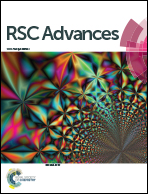Formation of p-type CuInS2 absorber layers via sulfurization of co-electrodeposited Cu–In precursors
Abstract
The electrodeposition of Cu–In alloy precursors with suitable stoichiometry and consisting mainly of intermetallic compounds, followed by sulfurization, is a promising method to form good quality CuInS2 thin films. In this work, Cu–In precursors forming intermetallic compounds were electrodeposited from an acidic solution on Mo substrates at 50 °C and sulfurized to form p-type CuInS2 absorber layers. We studied the crystal structure and compositional characteristics of films before and after sulfurization. Intermetallic compounds, namely Cu11In9 and Cu9In4, have been observed for precursor films suitable to form CuInS2, and p-type CuInS2 phase with small amounts of CuS was formed, showing the chalcopyrite and CuAu-type ordered phases for Cu/In ratios between 1.09–1.34. The carrier density was increased with increasing Cu/In ratio, but the photoelectrochemical response of the films was not directly related to this ratio. Film morphology has a critical influence on the photocurrent response. The highest photoelectrochemical current was achieved from compact and smooth precursors that were electrodeposited at −1.3 V while the lowest value was obtained with a rough dendritic precursor that was electrodeposited at −1.6 V.


 Please wait while we load your content...
Please wait while we load your content...